Table of Contents
National Flag
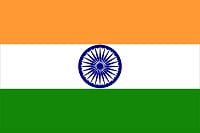 The National Flag of India is a horizontal rectangular tricolour of deep saffron at the top, white in the middle and dark green at the bottom in equal proportion. A navy-blue colour wheel is at the middle of the white band, which has 24-spoke. This navy-blue colour wheel is known as Ashoka Chakra.
The National Flag of India is a horizontal rectangular tricolour of deep saffron at the top, white in the middle and dark green at the bottom in equal proportion. A navy-blue colour wheel is at the middle of the white band, which has 24-spoke. This navy-blue colour wheel is known as Ashoka Chakra.
According to the Flag Code of India, the ratio of the length of the flag to its width (or height) is three ratios two (3:2). All the three horizontal bands of the flag are equally sized. The size of the Ashoka Chakra is not specified in the flag code, but its diameter is equal to the approximate width of the white band. Hand-spun or khadi cloth is the only material allowed to be used for the flag making. At present, the Karnataka Khadi Gramodyoda Samyukta Sangha is the only unit in India that is authorized to manufacture and supply the Indian flag. In the flag of India, Saffron stands for courage and sacrifice. White stands for truth and purity. Green is the symbol of life, abundance and prosperity. Chakra is the symbol of progress and movement.
The National Flag of India was adopted on July 22,1947 by the Constituent Assembly and became the official flag of the Dominion of India on 15 August 1947.
The National Flag of India is based on the flag of the Indian National Congress (INC), which was designed by Pingali Venkayya.
The Indian National Congress’s flag had the ‘Charkha’ in the place of the ‘Chakra’. That is the only difference between the India National flag and the Indian National Congress flag.
The new ‘Flag Code of India 2002’ was released on January 25, 2002 by the Union Government of India. It allowed the National Flag of India to be flown on the top of houses, offices or shops on any day of the year subject to their safeguarding the dignity, honour and respect of the flag. The National Flag should never be used as a cloth to cover tables, lecterns, podiums or buildings, or be draped from railings. If anyone insults the national flag or uses it in bad ways, under the provisions of the Flag Code, they are punishable by laws with imprisonment up to three years or a fine or both.
National Emblem
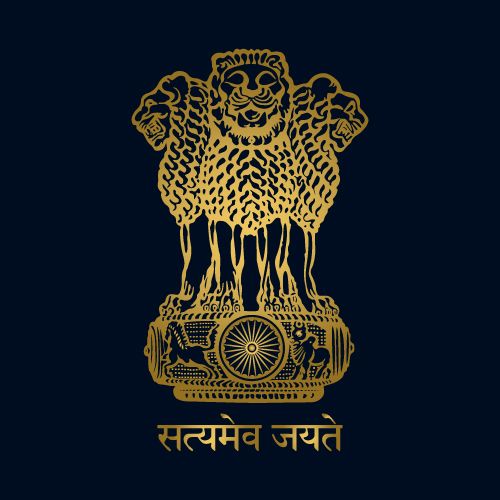 The National Emblem of India is an adaptation from the Sarnath Lion Capital of Ashoka. The Lion Capital of Ashoka is a sculpture of four Asiatic lions standing back-to-back each other, mounted on a circular base. These lions are a symbol of power, courage, confidence and pride. In the circular base, there is a Lion sculpture to the north, a Horse sculpture to the west, a Bull sculpture to the south and an Elephant sculpture to the east, and these sculptures are separates from each other by the wheel. This circular base is mounted on the top of a bell-shaped lotus.
The National Emblem of India is an adaptation from the Sarnath Lion Capital of Ashoka. The Lion Capital of Ashoka is a sculpture of four Asiatic lions standing back-to-back each other, mounted on a circular base. These lions are a symbol of power, courage, confidence and pride. In the circular base, there is a Lion sculpture to the north, a Horse sculpture to the west, a Bull sculpture to the south and an Elephant sculpture to the east, and these sculptures are separates from each other by the wheel. This circular base is mounted on the top of a bell-shaped lotus.
It is carved from a single block of sandstone. The Lion represents bravery, the Bull represents hard work and steadfastness, the Elephant represents strength and the Horse represents loyalty, speed and energy. In the Emblem of India, only three lions are visible at a time, the fourth being hidden from view. The words ‘satyameva jayate‘ are inscribed below the base plate of the Emblem in the Devanagari script. The words satyameva jayate are taken from the ‘Mundaka Upanishad’, it means ‘truth alone triumphs’.
It was adopted as the National Emblem of India on January 26, 1950 by the Government of India.
The National Emblem of India is part of the official letterhead of the Government of India and also appears on all Indian currency as well. The National Emblem of India represents the authority of the Government.
National Anthem
The song ‘Jana Gana Mana’ is the National Anthem of India. The Jana Gana Mana song is a Hindi version of a Bengali song “Bharoto Bhagyo Bidhata”, which is composed by Rabindranath Tagore. The complete Bengali version song consists of five stanzas. It’s first stanza consists of a full version of the National Anthem. The first stanza of the song Bharoto Bhagyo Bidhata in the Hindi version was adopted by the Constituent Assembly as the National Anthem on January 24,1950. On December 27, 1911, it was first publicly sung at the Calcutta Session of the Indian National Congress.
The official lyrics of the National Anthem in Hindi are shown in the table below:
| Devanagari script | Devanagari transliteration |
जन-गण-मन अधिनायक जय हे भारत भाग्य विधाता | पंजाब-सिंधु-गुजरात-मराठा द्राविड़-उत्कल-बङ्ग | विंध्य हिमाचल यमुना गंगा, उच्छल जलधि तरंग | तव शुभ नामे जागे, तव शुभ आशिष मांगे; गाहेतव ,जय गाथा। जन-गण-मंगलदायक जय हे, भारत भाग्य विधाता | जय हे, जय हे, जय हे, जय जय जय, जय हे || | Jana-gana-mana-adhinayaka jaya he Bharat-bhagya-vidhata Panjaba-Sindhu-Gujarata -Maratha, Dravida-Utkala-Banga Vindhya-Himachala-Yamuna-Ganga uchchala-jaladhi-taranga Tava Subha name jage, tava subha asisa mage, gahe tava jaya-gatha. Jana-gana-mangala-dayaka jaya he, Bharata-bhagya-vidhata. Jaya he, Jaya he, Jaya he, jaya jaya jaya jaya he. |
The playing time of the full version of the National Anthem is approximately 52 seconds. Its shortened version is approximately 20 seconds, which contains the first and last lines of the stanzas of the National Anthem. In January 1912, the song ‘Jana Gana Mana’ was published, under the title ‘Bharat Vidhata‘ in the Tatva Bodhini Patrika edited by Rabindranath Tagore himself, which was the official publication of the Brahmo Samaj. This song was also translated into English by Tagore in 1919 under the title ‘Morning Song of India’.
The National Anthem of Bangladesh is also written by Rabindranath Tagore. This song is ‘Amar Sonar Bangla‘.
National Song
The poem ‘Vande Mataram’ is the National Song of India. It was written in Sanskrit and composed by Bankim Chandra Chatterji in the 1870s. He also included this poem in his 1882 Bengali novel Anaandamath. This poem was first sung at the 1896 session of the Indian National Congress by Rabindranath Tagore.
It was adopted by the Constituent Assembly of India on January 24,1950, along with the national anthem. It has equal status with the National Anthem of India, ‘Jana Gana Mana’. The only first two verses of “Vande Mataram” are adopted as the National Song of India.
The official lyrics of the National Song in Hindi are shown in the table below:
| Devanagari script | Devanagari transliteration |
वन्दे मातरम्। सुजलाम् सुफलाम् मलयजशीतलाम् शस्यश्यामलाम् मातरम्। वन्दे मातरम्।
शुभ्रज्योत्स्नाम् पुलकितयामिनीम् फुल्लकुसुमित द्रुमदलशोभिनीम् सुहासिनीम् सुमधुर भाषिणीम् सुखदाम् वरदाम् मातरम्।। वन्दे मातरम्। | vande mātaram sujalāṃ suphalāṃ malayajaśītalām śasyaśyāmalāṃ mātaram vande mātaram
śubhrajyotsnām pulakitayāminīm phullakusumita drumadalaśobhinīm suhāsinīṃ sumadhura bhāṣiṇīm sukhadāṃ varadāṃ mātaram vande mātaram (Sanskrit) |
The original Vande Mataram poem consists of six stanzas. It was one of the most popular songs of protest during the Indian Independence movement. There is no time limit for the rendition of this song, unlike the national anthem. Its English translation was rendered by Shri Aurubindo.
National Calendar
The National Calendar of India is based on the Saka Calendar, which is used alongside the Gregorian Calendar. The Saka calendar consists of 365 days and 12 months, which is similar to the Gregorian calendar. The first month of the Saka calendar is Chaitra and the last month is Phalguna. In the normal year, Chaitra begins on March 22 and March 21 in a leap year. The first six months of the year in the Saka calendar have all 31 days, and the last six months have all 30 days.
To know about the 12 months in the Saka Calendar, refer to the table below
| Saka Samvat | Length | Gregorian Calendar | |
| S.N. | Name in Sanskrit | ||
| 1 | Chaitra | 30/31 | March 22/21- April 20 |
| 2 | Vaisākha | 31 | April 21- May 21 |
| 3 | Jyēshtha | 31 | May 22-June 21 |
| 4 | Āshādha | 31 | June 22- July 22 |
| 5 | Shrāvana | 31 | July 23- August 22 |
| 6 | Bhādra | 31 | August 23- September 22 |
| 7 | Āshwin | 30 | September 23- October 22 |
| 8 | Kārtika | 30 | October 23- November 21 |
| 9 | Agrahāyana | 30 | November 22- December 21 |
| 10 | Pausha | 30 | December 22- January 20 |
| 11 | Māgha | 30 | January 21- February 19 |
| 12 | Phālguna | 30 | February 20- March 20/21 |
The first day of the week in the Saka Calendar is Ravivara (Sunday). The Government of India has recognized Sunday to Saturday as the week.
To know about the 7 days in the Saka Calendar, refer to the table below
| Weekday | Saka | Gregorian |
| 0 | Ravivara | Sunday |
| 1 | Somvara | Monday |
| 2 | Mangalavara | Tuesday |
| 3 | Budhavara | Wednesday |
| 4 | Brahaspativara | Thursday |
| 5 | Shukravara | Friday |
| 6 | Shanivara | Saturday |
The national calendar is issued for the following official purposes:
1. The Gazette of India
2. For news broadcast by all India Radio
3. For Calendar and communications issued by the Government of India.
The Saka Era started at 78 A.D. To know the Saka year, we must subtract 78 years from the Gregorian calendar. The national calendar was adopted on 1 Chaitra 1879 Saka Era or 22 March 1957.
The first day of the Saka calendar is celebrated as the new year in the areas of Maharashtra and Goa as Gudi Padwa, in Karnataka, Andhra Pradesh, and Telangana as Ugadi.
To know about some other National Symbols of India, refer to the table below
| Symbol | Name | Image |
| Official Name | Republic of India | |
| National flag | Tiranga |  |
| National emblem | State Emblem of India(Lion Capital of Ashoka) |  |
| National motto | Satyameva Jayate(Truth Alone Triumphs) | |
| National days | Independence Day, Republic Day, Gandhi Jayanti | |
| National currency | Indian rupee | ₹ |
| National cockade | Indian cockade | 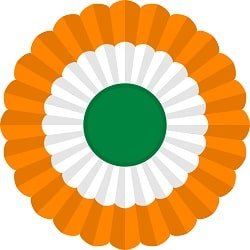 |
| National animal | Tiger(Panthera tigris) | 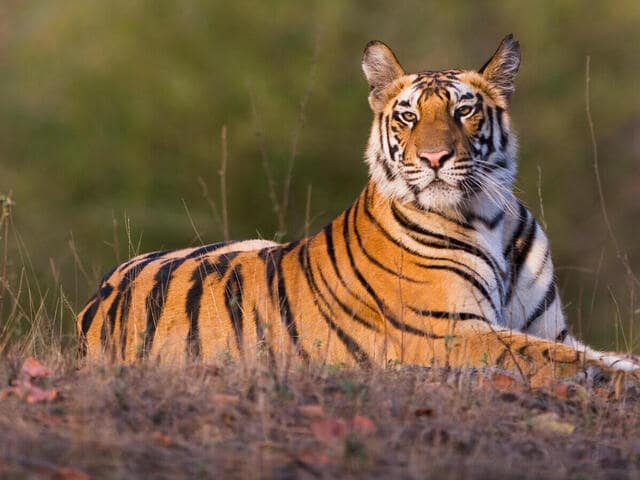 |
| National heritage animal | Indian elephant | 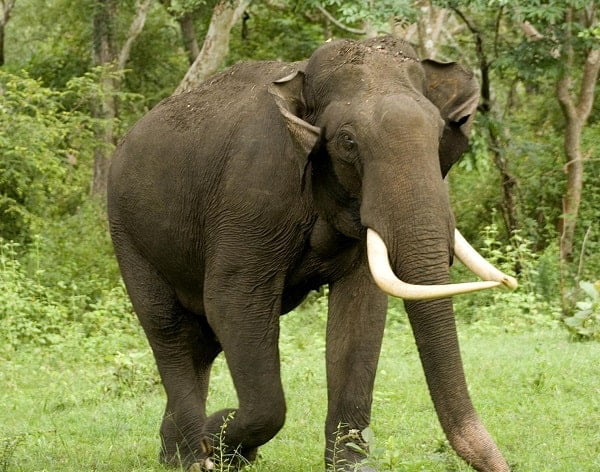 |
| National aquatic animal | Ganges river dolphin |  |
| National reptile | King cobra | 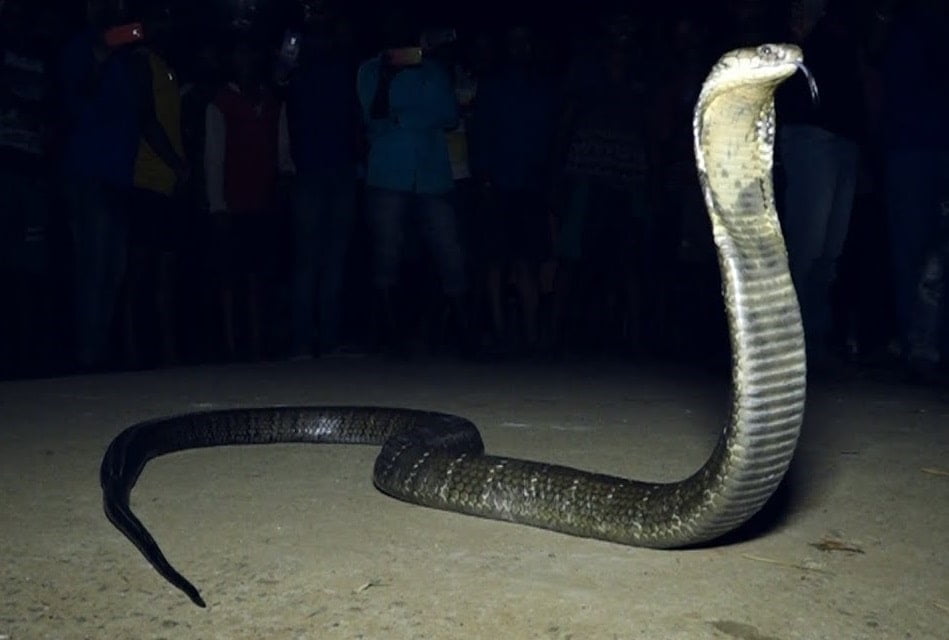 |
| National bird | Indian peacock (Pavo cristatus ) | 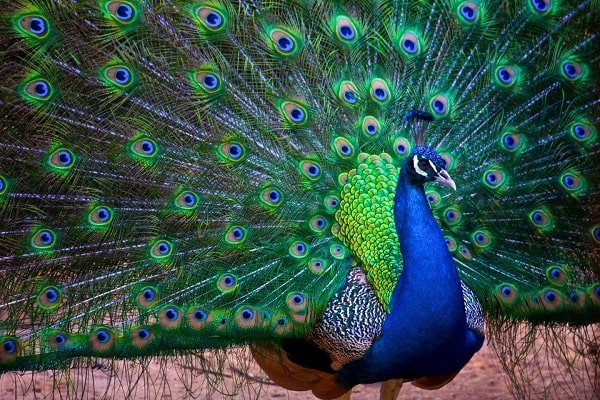 |
| National flower | Indian lotus(Nelumbo nucifera) | 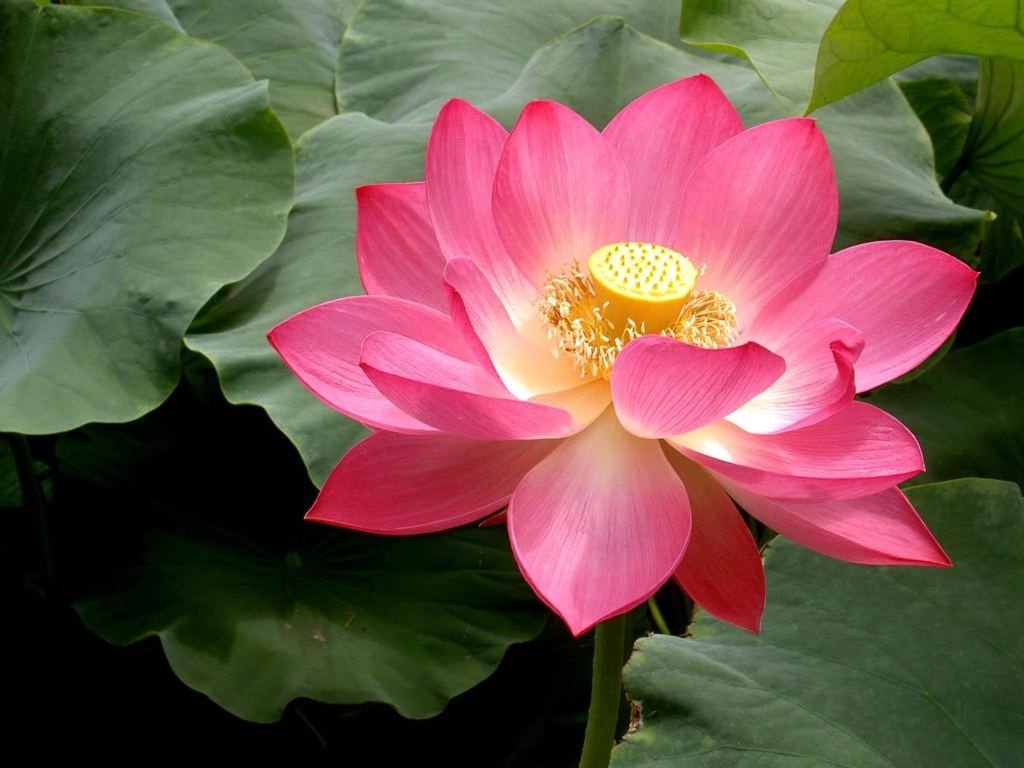 |
| National tree | Indian banyan(Ficus bengalensis) | |
| National fruit | Mango (Mangifera indica) | 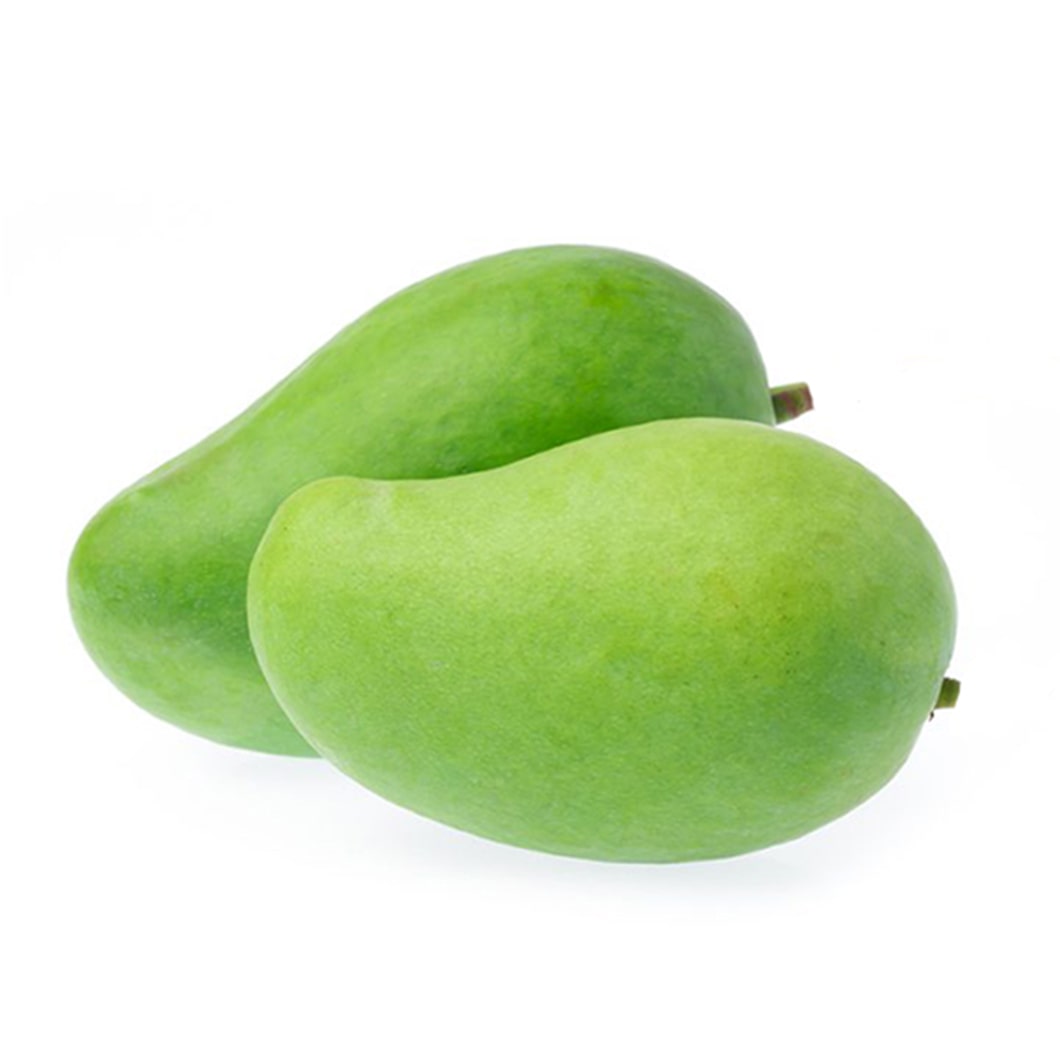 |
| National river | Ganga | |
| National game | Hockey |  |
| National monument | India Gate | 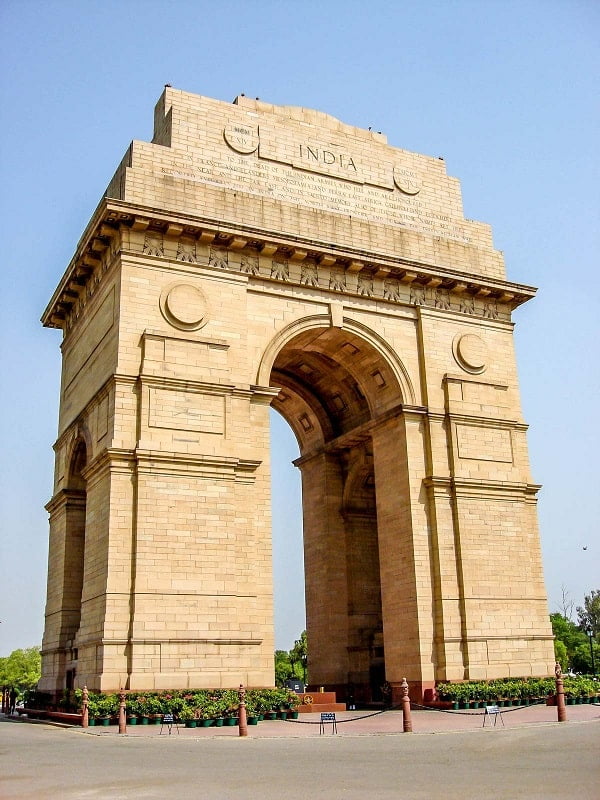 |
FOR MORE INFORMATION ABOUT STATIC GK
